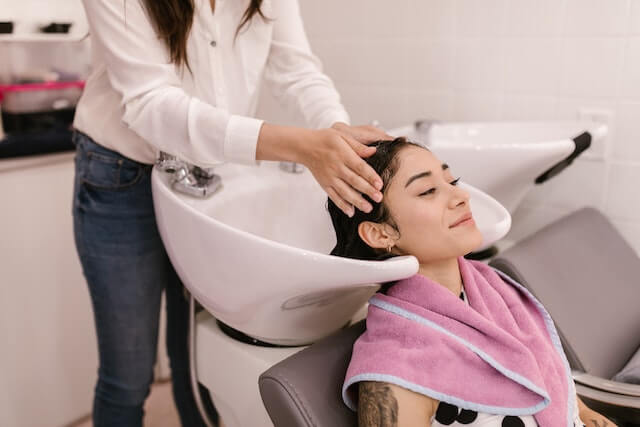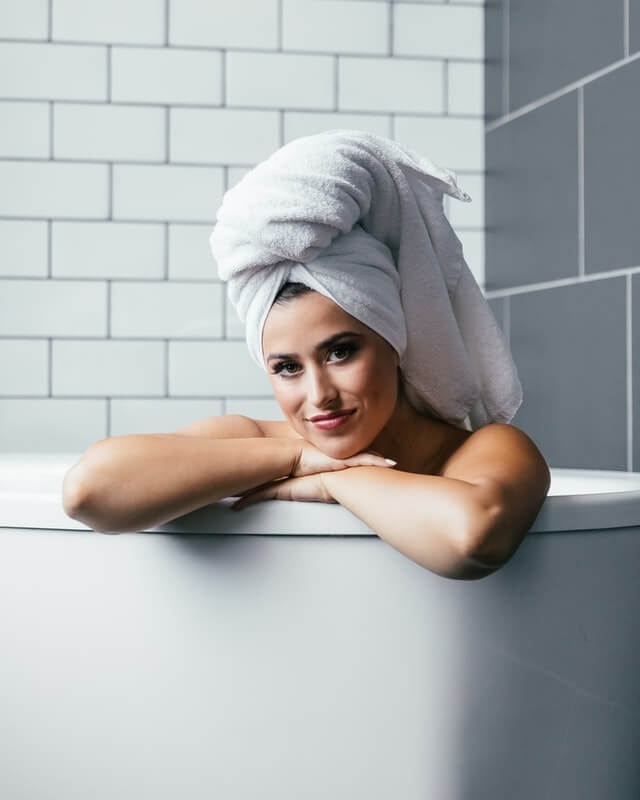No one enjoys scratching their head and grabbing for their crown to relieve the grating sensation. Fortunately, a lot of these problems might be resolved by maximizing your hair care regimen with an exfoliator. It’s crucial to exfoliate to remove residual filth, sweat, and debris that has built throughout the week, regardless of whether you have curly hair, a dry scalp, or dermatitis. Although it’s simple to overlook the area while taking a shower, professionals concur that cleaning our scalps is just as crucial as our skincare routine.
Scalp exfoliation is an important part of a healthy hair care routine that helps to remove dead skin cells, unclog hair follicles, and improve hair growth. If you’re looking to improve the health of your scalp and hair, incorporating scalp exfoliation into your routine can be a game-changer.
Table of Contents
What is Scalp Exfoliation?
Scalp exfoliation is the process of removing dead skin cells from the scalp using exfoliants. This can be done with a physical exfoliant, such as a brush or scrub, or with an acidic exfoliant, such as salicylic acid or alpha-hydroxy acids (AHAs). Physical exfoliation works by manually removing the dead skin cells, while acidic exfoliants dissolve the bonds between the dead skin cells, allowing them to be easily rinsed away.
Why is Scalp Exfoliation Important?
A build-up of dead skin cells on the scalp can lead to clogged hair follicles, which can result in hair thinning, hair loss, and other scalp conditions such as dandruff and itching. Scalp exfoliation helps to remove these dead skin cells and unclog the hair follicles, which can improve hair growth and the overall health of the scalp.

In addition, a healthy scalp is essential for healthy hair growth. A well-exfoliated scalp is better able to absorb the nutrients and moisture that your hair needs to grow strong and healthy. Regular scalp exfoliation can also help to improve the overall health of your hair, making it look and feel smoother, shinier, and stronger.
How to Exfoliate Your Scalp?
There are two main types of scalp exfoliation – physical exfoliation and acidic exfoliation.
Physical Exfoliation
Physical exfoliation involves using a brush or scrub to manually remove the dead skin cells from the scalp. Some popular tools for physical exfoliation include a scalp brush, a konjac sponge, or a scrub made from sugar or sea salt.
To physically exfoliate your scalp, start by wetting your hair and massaging a small amount of the exfoliant into your scalp. Use gentle, circular motions to massage the exfoliant into the scalp for about 2-3 minutes. Rinse the exfoliant out of your hair and follow up with your regular shampoo and conditioner.
It’s important to be gentle when physically exfoliating your scalp, as over-exfoliating can cause irritation and damage to the scalp. If you have sensitive skin, it’s best to start with a mild exfoliant and gradually increase the intensity of the exfoliation over time.
Acidic Exfoliation

Acidic exfoliation involves using an exfoliant that contains salicylic acid or AHAs to dissolve the dead skin cells and unclog the hair follicles. Salicylic acid is a beta-hydroxy acid that is commonly used in acne treatments, while AHAs are a group of exfoliating acids that are derived from fruits and milk.
To acidic exfoliate your scalp, start by wetting your hair and massaging a small amount of the exfoliant into your scalp. Leave the exfoliant on for about 2-3 minutes, then rinse it out thoroughly with water. Follow up with your regular shampoo and conditioner.
It’s important to be careful when using acidic exfoliants on the scalp, as overuse can cause irritation and damage to the scalp. If you have sensitive skin, it’s best to start with a mild exfoliant and gradually increase the intensity of the exfoliation over time.
Benefits of Scalp Exfoliation
- Unclogs hair follicles: Scalp exfoliation helps to remove dead skin cells that can clog hair follicles, leading to hair loss and other scalp conditions.
- Improves hair growth: A healthy scalp is essential for healthy hair growth, and regular scalp exfoliation can help to improve the overall health of the scalp and hair.
- Reduces dandruff: Scalp exfoliation can help to remove the build-up of yeast and dead skin cells that can cause dandruff.
- Relieves itching: Scalp exfoliation can help to relieve itching by removing dead skin cells and unclogging the hair follicles.
- Promotes healthy hair: Regular scalp exfoliation can improve the overall health of your hair, making it look and feel smoother, shinier, and stronger.
- Absorbs nutrients: A well-exfoliated scalp is better able to absorb the nutrients and moisture that your hair needs to grow strong and healthy.
- Prevents buildup: Regular scalp exfoliation helps to prevent build-up of dead skin cells, product residue, and other debris that can lead to scalp irritation and damage.
How to do scalp exfoliation at home?
- Wet your hair: Wet your hair thoroughly with warm water to help loosen any dead skin cells and product buildup on the scalp.
- Apply exfoliant: Choose an exfoliant suitable for your scalp type (physical or chemical). For physical exfoliation, use a scalp brush, a konjac sponge, or a scrub made from sugar or sea salt. For chemical exfoliation, use a product that contains salicylic acid or AHAs.
- Massage the scalp: Massage the exfoliant into your scalp using gentle, circular motions. For physical exfoliation, use the brush or scrub to gently massage the scalp for 2-3 minutes. For chemical exfoliation, massage the product into the scalp and leave it on for 2-3 minutes.
- Rinse: Rinse the exfoliant out of your hair thoroughly with warm water. For chemical exfoliation, it is important to rinse thoroughly to remove all traces of the exfoliant.
- Follow up with shampoo and conditioner: After exfoliating, follow up with your regular shampoo and conditioner to cleanse the scalp and hair.

Should I exfoliate my scalp wet or dry?
Scalp scrubs should only be applied to damp hair; some pre-shampoo treatments are intended to be used to dry hair. Before applying your scalp scrub, completely moisten your hair and scalp as if you were preparing to shampoo.
3 Amazing Remedies of Lemon Juice for the Scalp
How to clean scalp pores naturally?
5 Remedies of Hair Mask for Dry Scalp
